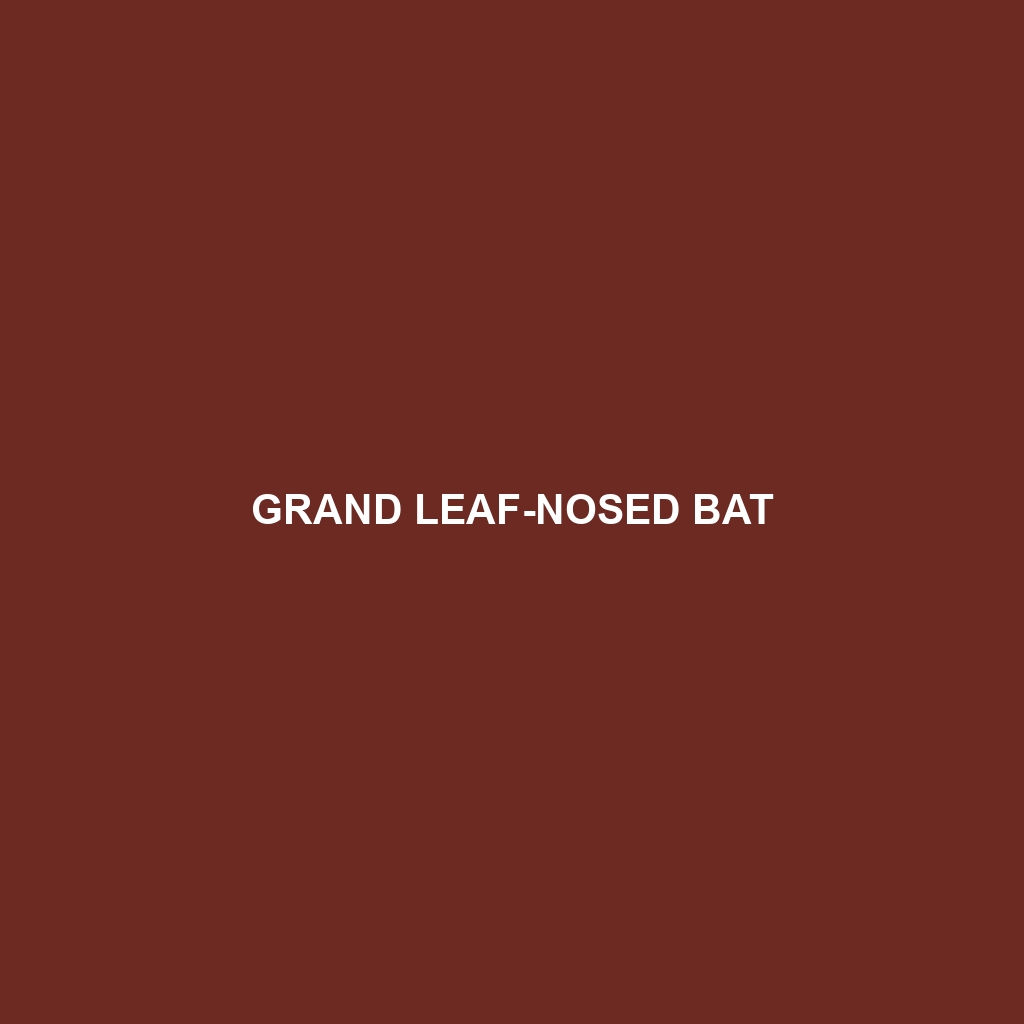Grand Leaf-nosed Bat
Common Name: Grand Leaf-nosed Bat
Scientific Name: Hipposideros grandis
Habitat
The Grand Leaf-nosed Bat is primarily found in tropical forests and limestone caves across Southeast Asia, particularly in countries like Malaysia, Thailand, and Vietnam. These bats prefer warm, humid environments and are often spotted roosting in dark crevices during the day, which protects them from predators and harsh weather.
Physical Characteristics
The Grand Leaf-nosed Bat is a medium-sized bat, with a wingspan of approximately 30-35 cm. This species is distinguished by its unique leaf-like nose structure, which aids in echolocation. Its fur is typically a mottled gray to brown color, providing excellent camouflage against tree bark. The bat’s pointed ears and large eyes enhance its sensory perception, making it adept in its nocturnal lifestyle.
Behavior
These bats are mostly nocturnal, emerging at dusk to forage for food. They exhibit social behavior, often roosting in large colonies, which can number in the hundreds. The Grand Leaf-nosed Bat is known for its agile flight, capable of maneuvering through dense foliage, and it relies heavily on echolocation to navigate and hunt for insects. Their mating rituals include elaborate courtship displays, making them fascinating to observe in the wild.
Diet
The Grand Leaf-nosed Bat primarily feeds on insects, including moths, beetles, and other small flying arthropods. Using their sophisticated echolocation, they can locate prey with remarkable precision. This species plays a crucial role in controlling insect populations, thus helping to maintain ecological balance.
Reproduction
The reproductive season for the Grand Leaf-nosed Bat typically occurs in the late spring. Females give birth to one pup after a gestation period of around four months. The pups are cared for intensively in the first weeks of life, as they rely on their mothers’ milk for nutrition until they are capable of flying and feeding independently.
Conservation Status
The Grand Leaf-nosed Bat is currently classified as ‘Vulnerable’ by the International Union for Conservation of Nature (IUCN). Habitat destruction and human encroachment pose significant threats to their populations. Conservation efforts are crucial to protect their natural habitats and ensure their survival.
Interesting Facts
One fascinating fact about the Grand Leaf-nosed Bat is that it possesses an unusually large noseleaf which contributes to its echolocation abilities, allowing it to locate prey even in complete darkness. Additionally, these bats have a unique grooming behavior where they meticulously clean their fur using their thumbs, showcasing a level of care for their hygiene.
Role in Ecosystem
The Grand Leaf-nosed Bat plays a vital role in its ecosystem by controlling pest populations and ensuring pollination for some plant species. Their feeding habits contribute to the overall health of their forest habitats, making them a key species in maintaining biodiversity in their natural environment.
